Kaga Yuzen: Experiencing a Traditional Silk Dyeing Technique in Kanazawa
Face to face with one of Japan's most artistic fabric dyeing techniques
This traditional form of art is breathtakingly beautiful!
In the Shinkansen lobby of JR Kanazawa station, the entrance to the restrooms is signaled by two dramatic pieces of artwork, one dominated by blue (signifying the men’s room) and one by red (signifying the ladies’ room). If you are in a hurry, you might just be guided by the colors without even noticing the artistry. That would be a mistake. In fact, these two panels, each roughly the size of a tatami floor mat, are examples of Kaga Yuzen, the intricate hand-painted silk dyeing that Kanazawa is famous for. They were created by Kenji Maida, one of Kanazawa’s greatest Kaga Yuzen artisans, encased between two thick sheets of glass and installed in the station in 2015.
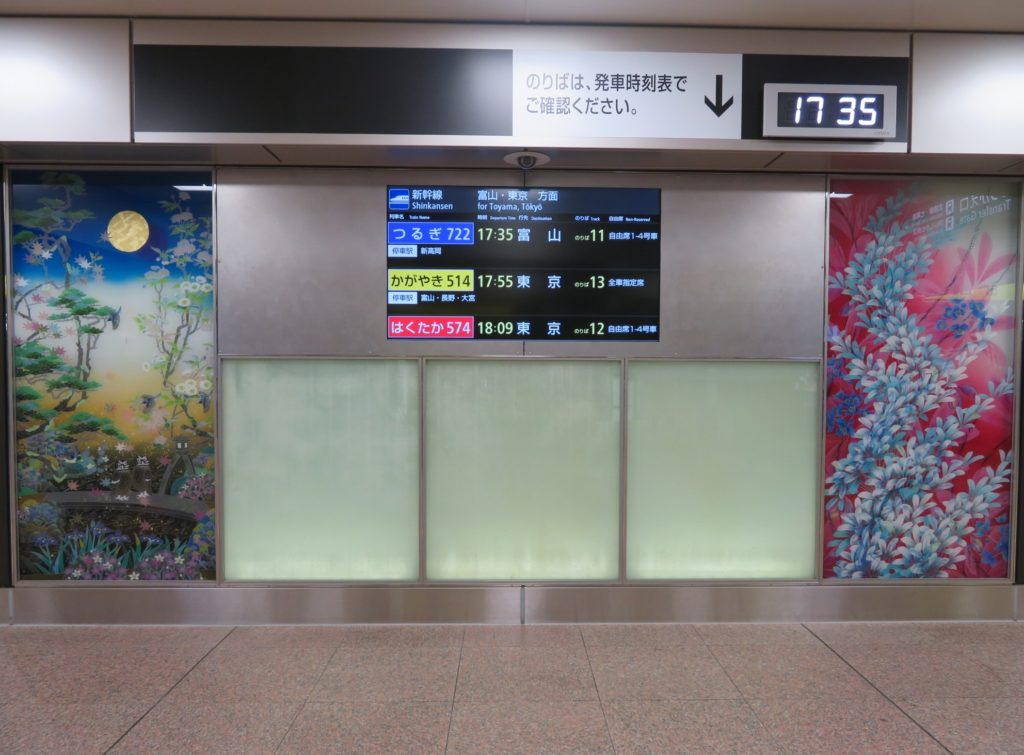
Kaga Yuzen in the Kanazawa Shinkansen station to mark the toilet entrances.
You might think it odd that such amazing art is invested in something as prosaic as restroom entrances. On the other hand, what better place to show off one of the most amazing forms of artistry and craftsmanship this area produces than a place that everyone uses? Let’s face it, one thing Japan does particularly well is the attention to detail involved in beautifying even the mundane.
Traditional silk dyeing
Kaga Yuzen itself is anything but mundane. Traditional Japanese garments are always beautiful, and those made with Kaga Yuzen-decorated silk are among the most spectacular kimonos and other garments out there. The silk-dyeing technique is also now being used by renowned designers such as Yumi Katsura and for producing accessories for modern Western-style apparel as well, ensuring its continued value in contemporary Japan.
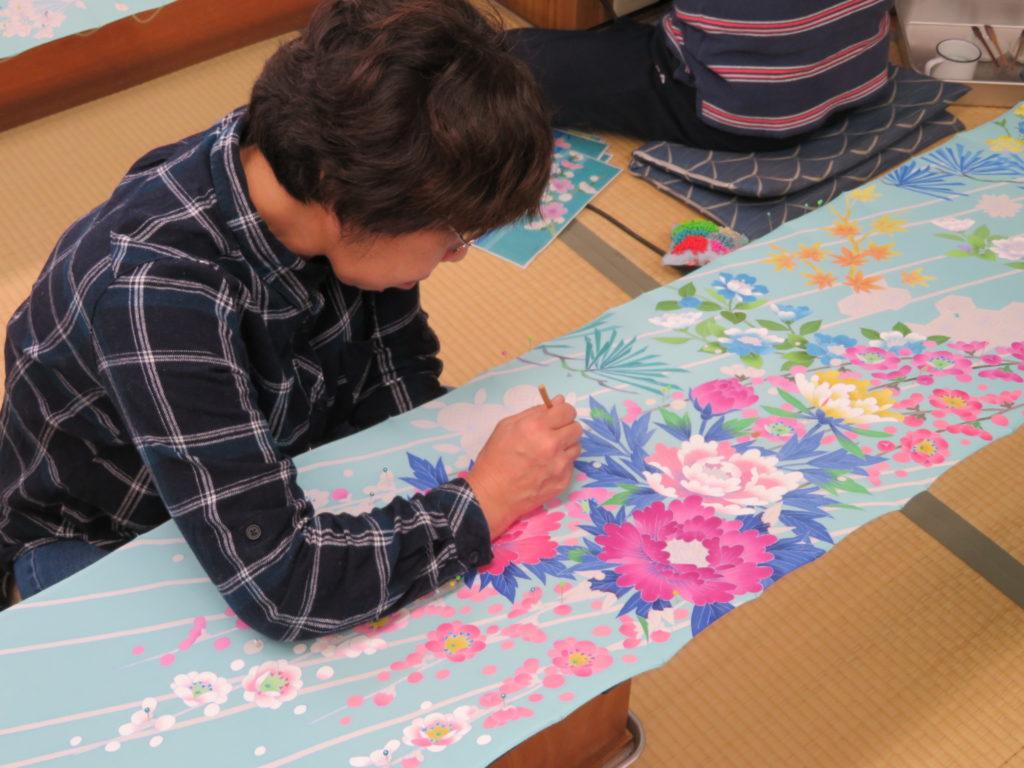
An artisan at work: Kaga Yuzen silk dyieng in Kanazawa.
The Kaga Yuzen form of silk dyeing developed five centuries ago in the Kanazawa area and can involve either silk screening to transfer repeating patterns to cloth or, more popularly, hand-painting dyes onto cloth in intricate designs often depicting flowers, birds or landscapes. It is a complicated and painstaking process that yields a sophisticated and elegant result.
A personal encounter
Not long ago, I had the chance to visit the Maida studio in Kanazawa to learn about Kaga Yuzen and try my hand at this traditional craft of hand-painting on silk.
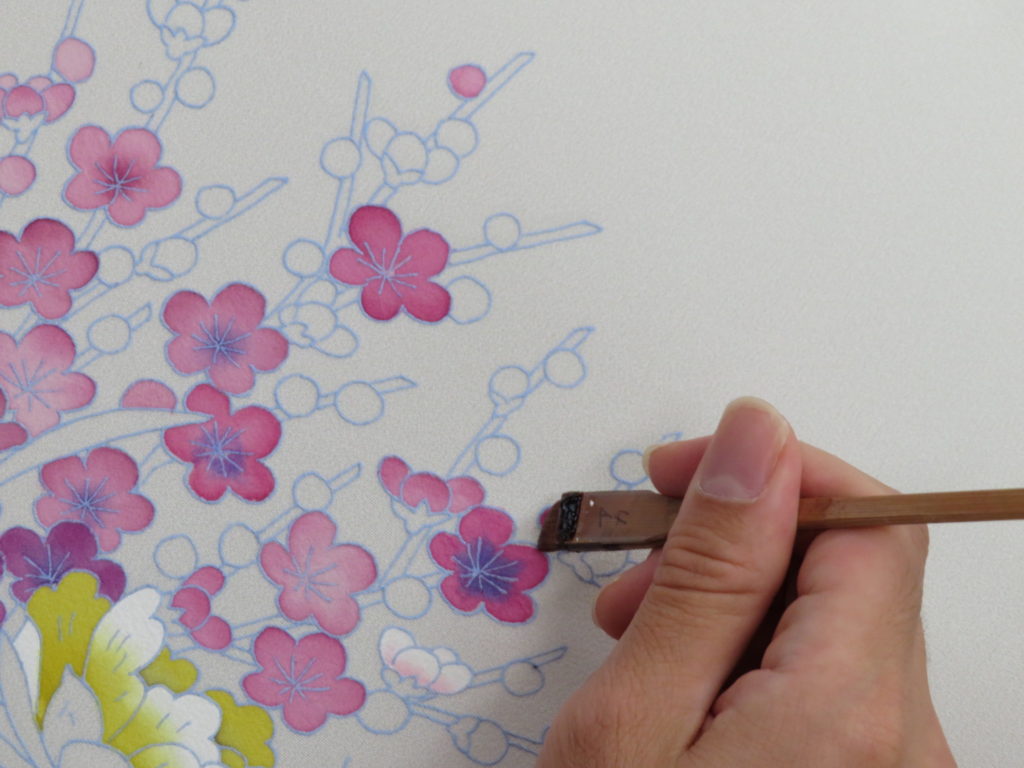
Me brushing on the dye, taking care to stay inside the lines.
Our host, Maida-san the younger, patiently explained the history of Kaga Yuzen as a cultural art fostered by the local daimyo lords in the 15th century when this region was known as Kaga. Because of this daimyo sponsorship, the art form is more “samurai” than “court.” At one time, there were 150 houses in Kanazawa producing Kaga Yuzen; there are substantially fewer in operation today.
It is a complicated and painstaking process that yields a sophisticated and elegant result.
Maida-san then showed us how designs for Kaga Yuzen are first drawn on paper to get all the details just right. The design is then traced onto the silk fabric, and the lines are drawn over with a mochi rice-based glue (“nori”) that has been fed into a cone not unlike a piping cone used for cake decorating.
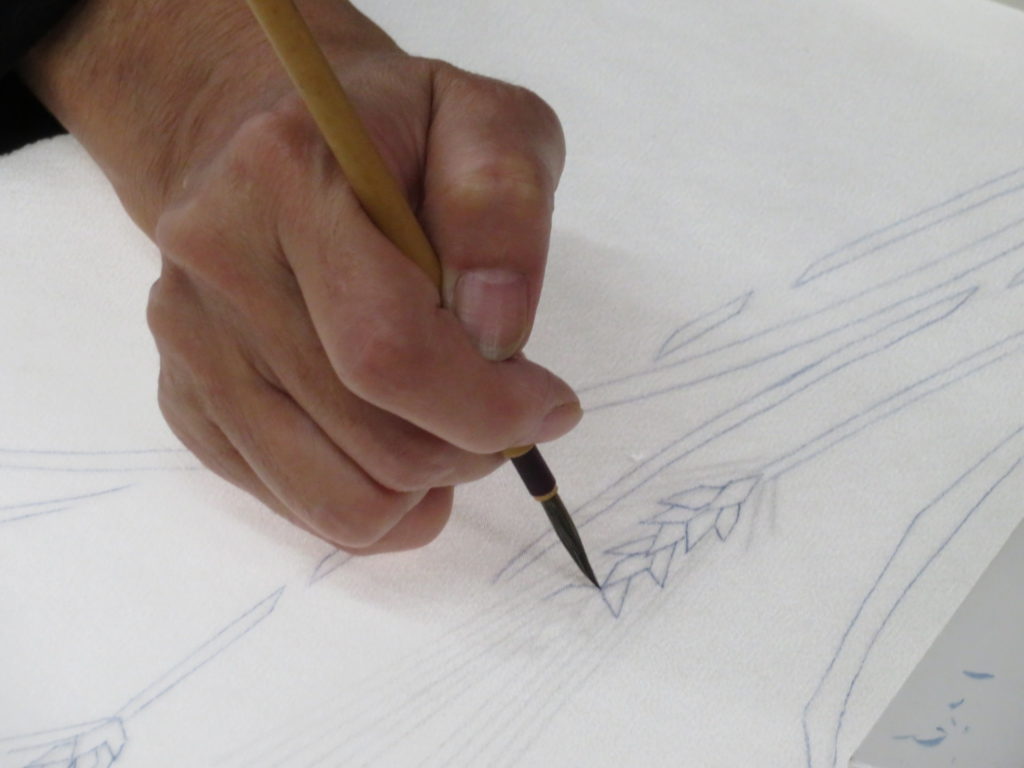
The beginning of a long process: Kaga Yuzen begins with tracing the hand-drawn designs onto silk.
The nori-based lines ensure that when the designated area is filled in with dye the color will not run into neighboring areas. The process is similar to batik.
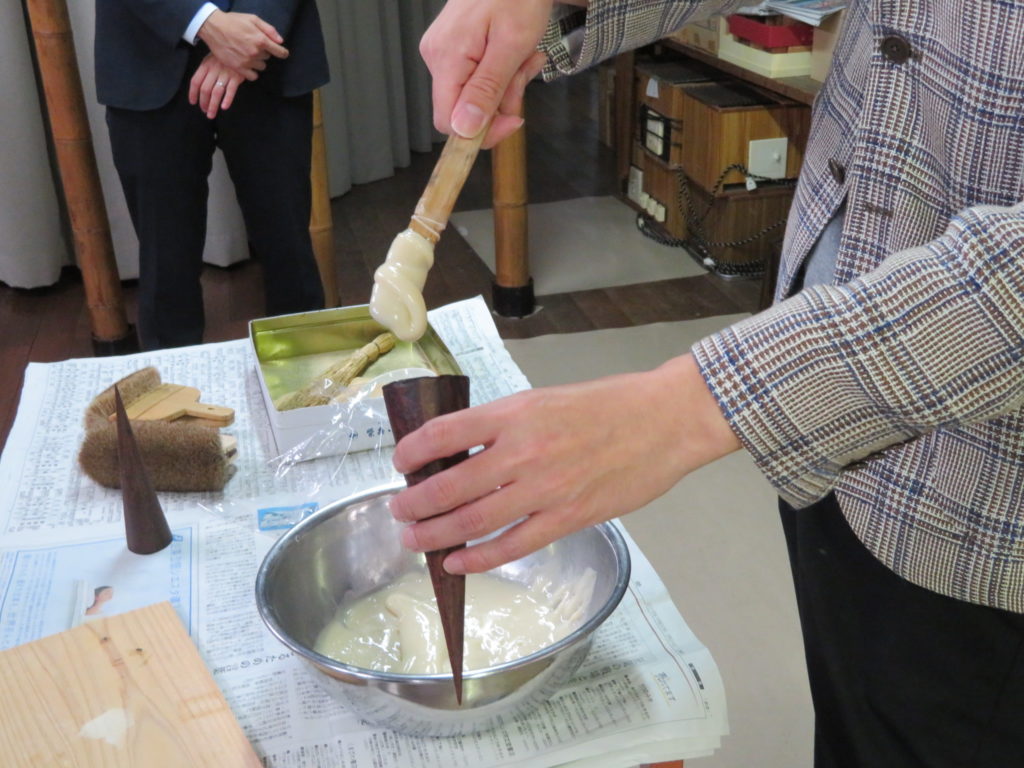
Adding mochi rice-based nori into the piping cone.
The dyes are all natural, derived from plants and other natural substances. There are five basic colors used in Kaga Yuzen: red, yellow, indigo, green and purple. Some colors are harder to produce than others, making them more valuable. Purple is a particular example.
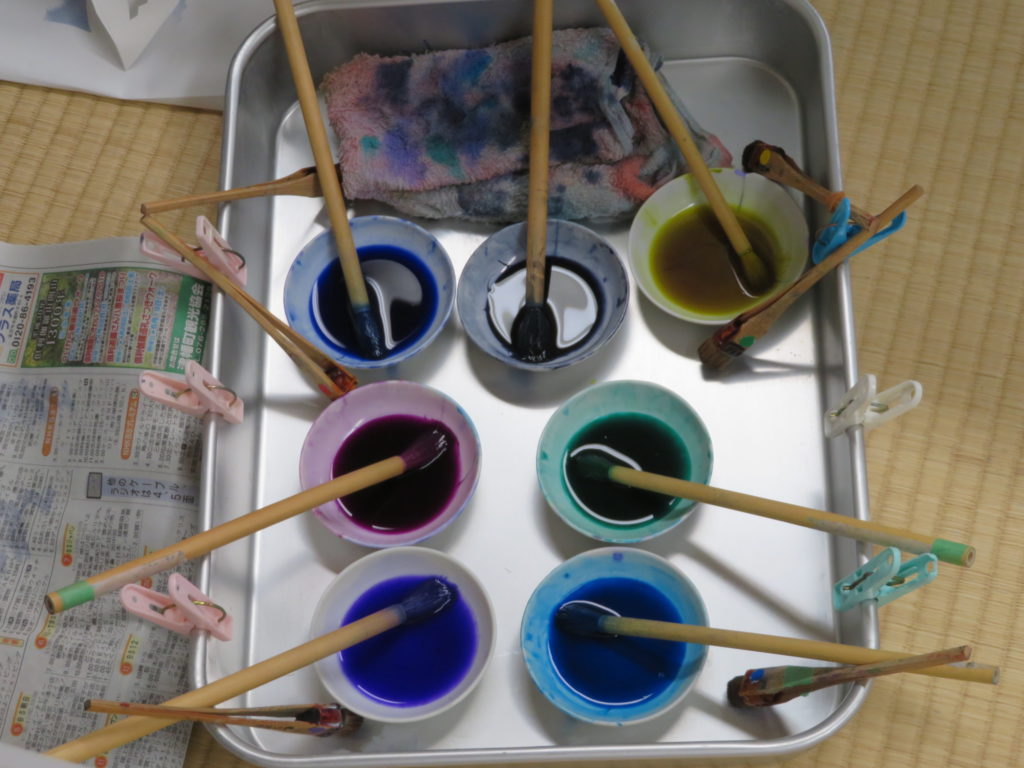
Kaga Yuzen natural dyes.
When decorating a kimono, the garment is first assembled, then the design for it is prepared. The basic principle is that the Kaga Yuzen-decorated kimono, when hung on a kimono rack, could stand alone as its own piece of art, serving as a room divider or other decoration.
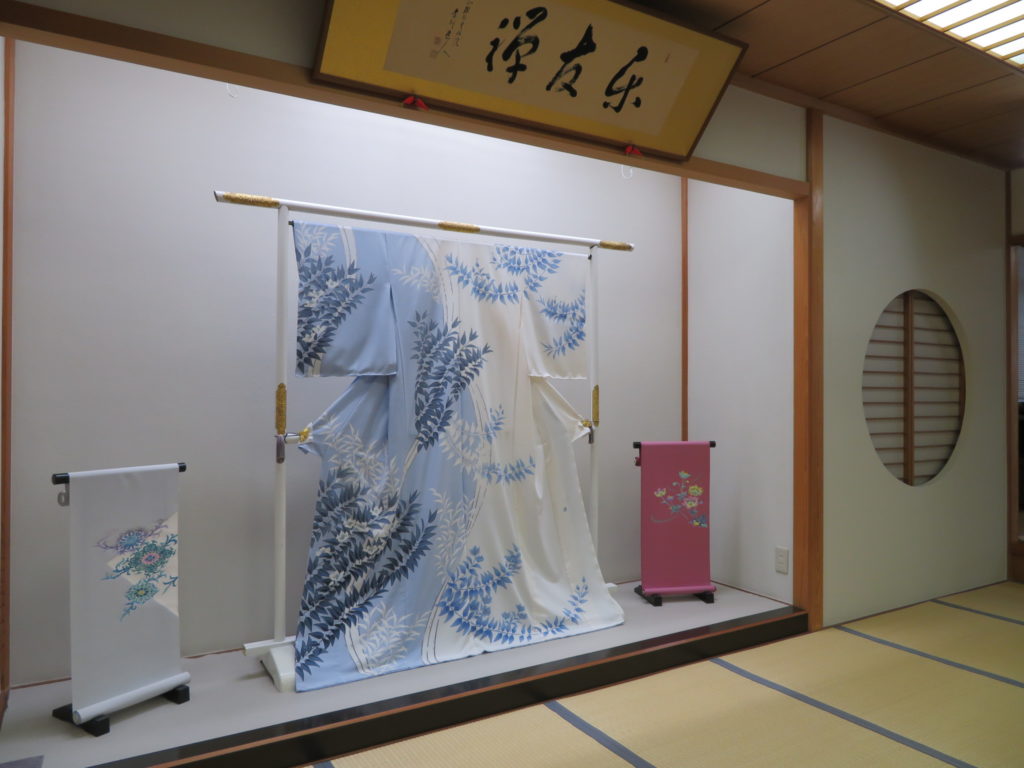
A completed Kaga Yuzen kimono – a true work of art!
Once the design has been decided, the kimono is then disassembled in order for the design to be painted onto it in just the right way to form a complete picture when the kimono is finally re-assembled. It takes an entire bolt of silk, about 10 meters long and 35.5 centimeters wide, to make a single kimono, so usually the entire bolt is dyed at once. To facilitate the process, it is stretched taut on a bamboo frame.
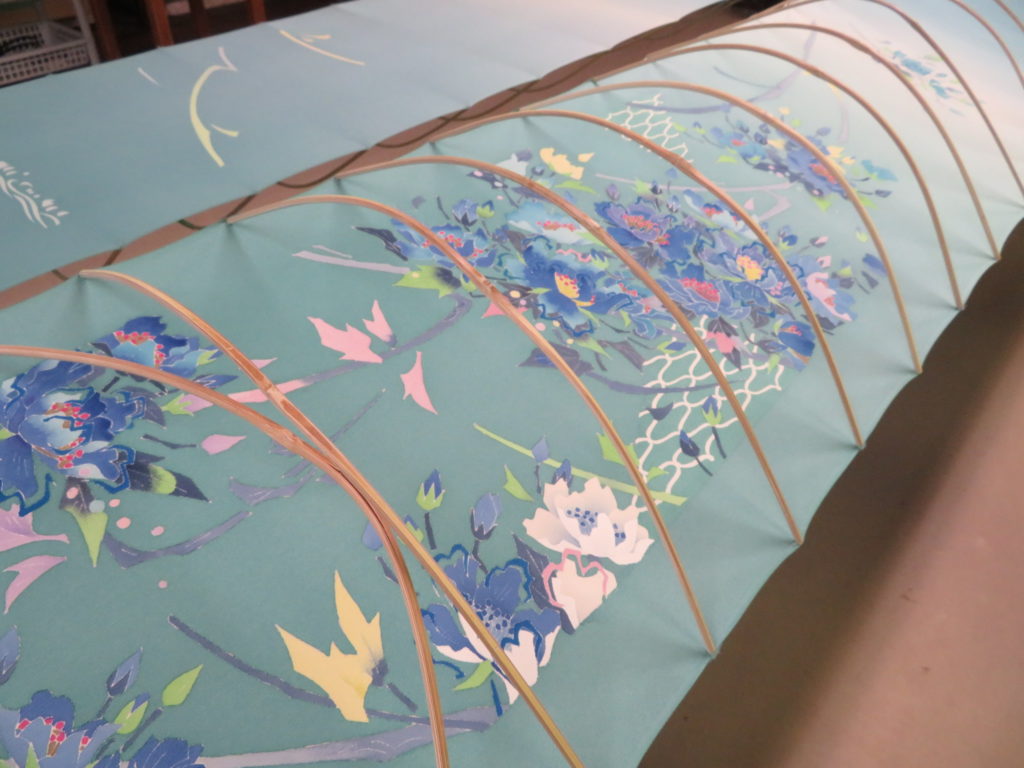
The back of cloth stretched on a bamboo frame.
Once the design has been drawn onto the fabric with nori, the back of the fabric is also coated with a soy paste to prevent distortion. Next, trained craftspersons go to work painting in the colors. This is meticulous close work. At the same time, when I tried it for myself, once I got a feel for the materials, I found it to be a rather calming, meditative process. I was particularly intrigued at how gradations of color could be achieved by simply touching the dye-filled brush to the fabric in one spot and letting the color bleed away. I was told this kind of gradation is a particular feature of Kaga Yuzen.
When the design has been completely colored in, it is steamed to set the colors. Next, the colored parts are also covered with nori. This protects them while the background part of the cloth is dyed. Getting the entire background color even is as challenging as filling in the intricate designs. It is done using special brushes made in Kyoto out of deer fur (just the hair, not the pelt — no deer are harmed).
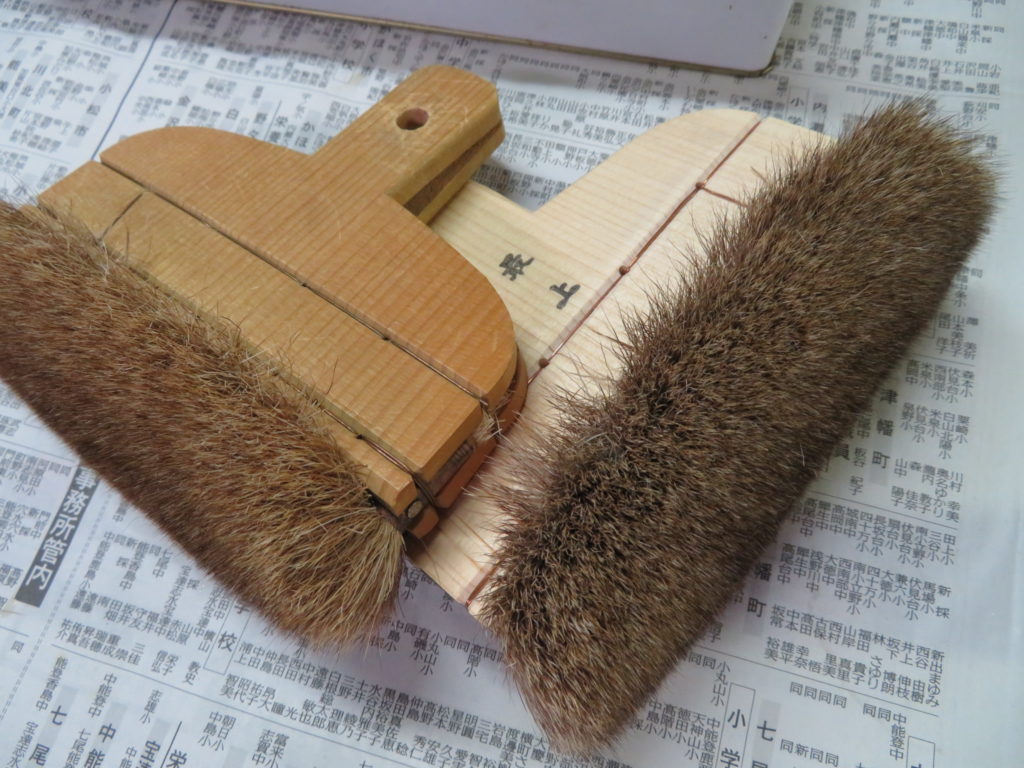
Deer hair brushes used to evenly color the background fabric.
Next, the entire bolt is steamed to ensure that all the colors are set. Finally, the nori is removed by washing the fabric. Originally, this washing process was done in the swift cold water of one of Kanazawa’s two rivers. Visualize these 10-meter pieces of cloth rippling as the river’s waters tugged at them and washed away the nori. It must have been an amazing sight. Apparently, there is still one Kaga Yuzen studio that washes its cloth in the river this way.
Once the nori has been washed out of the fabric, a very thin line of white is left behind delineating the original design lines. This delicate line is a particularly endearing feature of Kaga Yuzen.
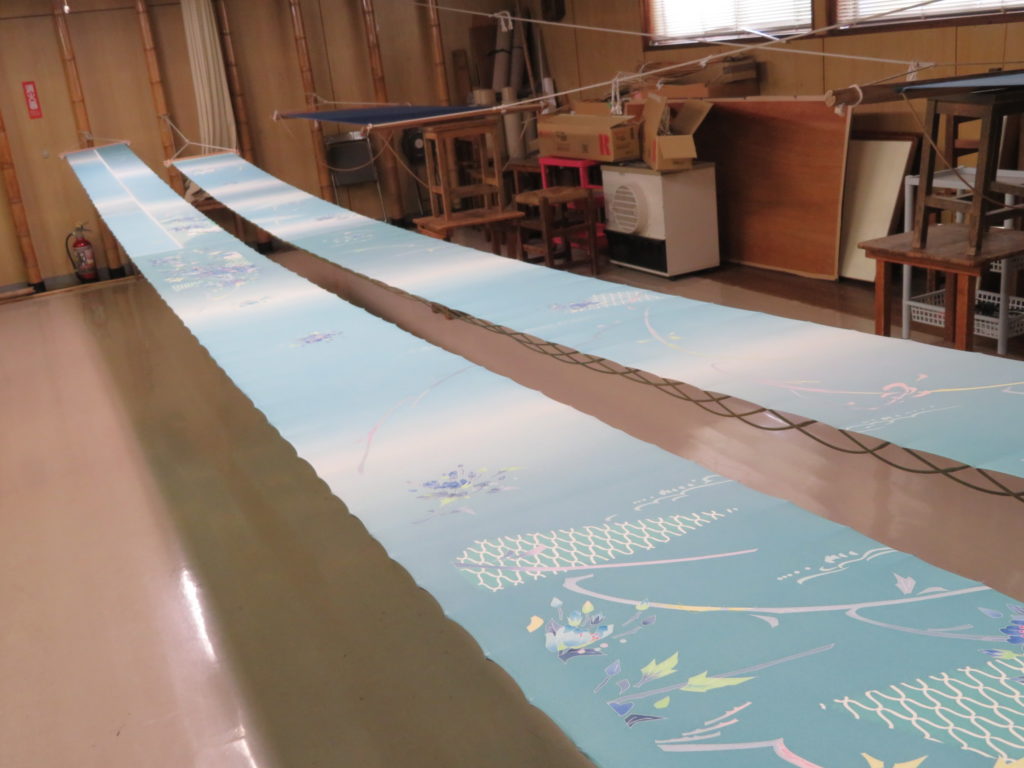
The completed cloth is dried and steamed to set the colors.
The fabric is fully dried and then it is ready to be made into a kimono or whatever it was ultimately designed to be. Besides wearable art, such as kimono, Kaga Yuzen is also popular to produce works of art suitable for hanging, or other modes of display, as in the case of the station toilet entrances.
The piece of fabric I worked on was turned into a furoshiki (traditional wrapping cloth), neatly folded into a wooden box, and sent to my home when it was finished.
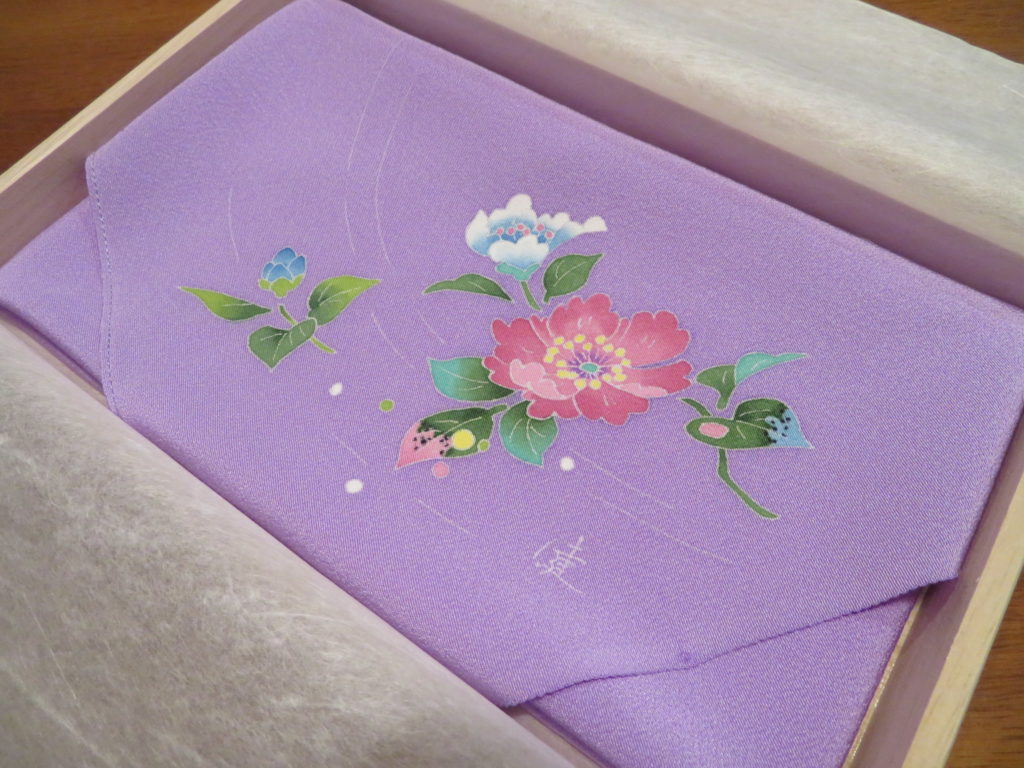
My own work of art!
It is a beautiful keepsake of a most amazing and memorable experience, so pretty that I’m almost afraid to use it. Almost.
The Deets
Kagayuzen Maida Studio
Address: 3-9-19 Hondamachi, Kanazawa-shi, Kanazawa Prefecture
Hours: Showroom open daily, 10 a.m.-5 p.m.
Phone: 076-221-3365 *Tours and hand-dyeing experience available by phone appointment (only in Japanese)
You can also experience Kaga Yuzen hand-painting with English instruction at the Kaga Yuzen Kimono Center (8-8 Koshomachi, Kanazawa-shi). They also rent Kaga Yuzen kimono for tourists to wear while sightseeing in historic Kanazawa. Give it a try — you’ll love it!












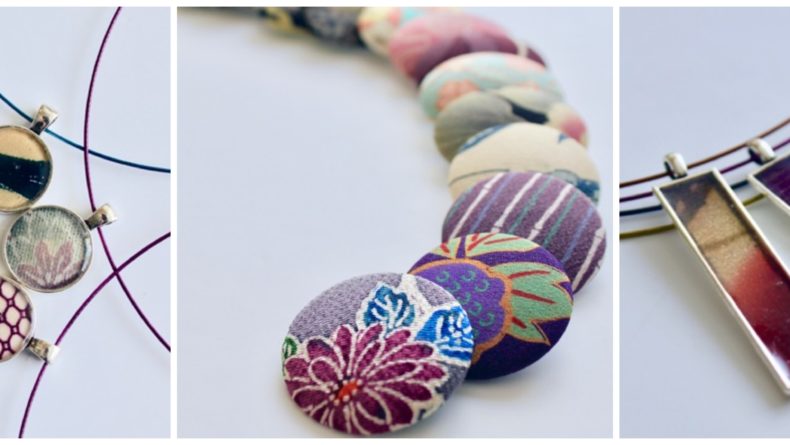
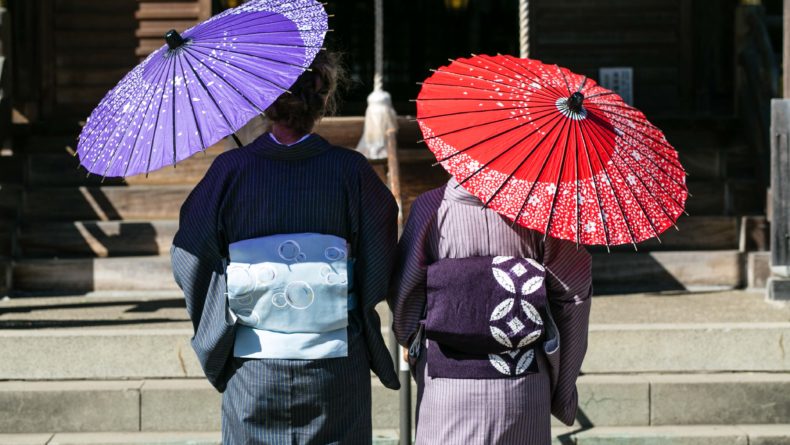
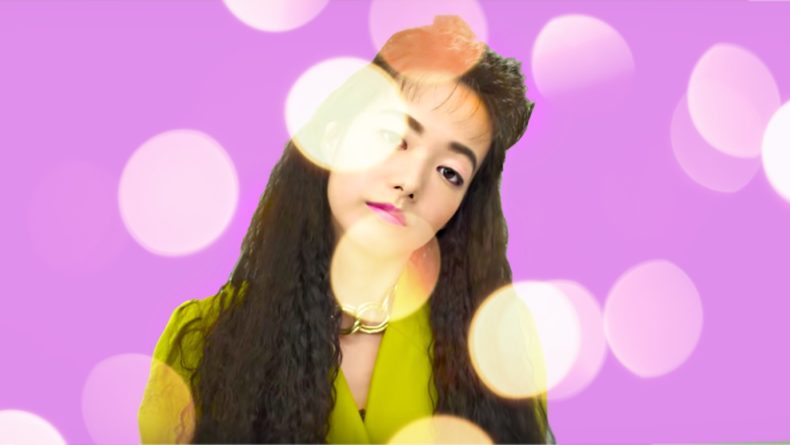

Leave a Reply